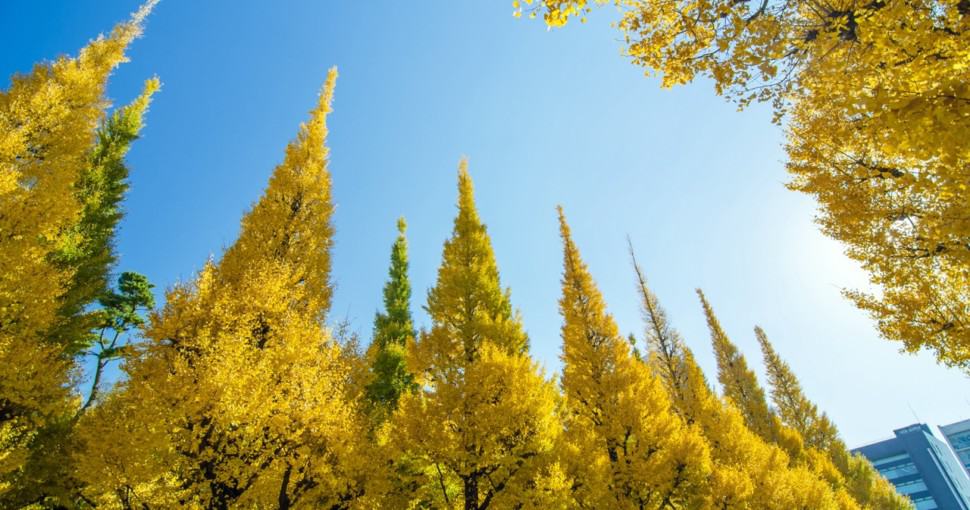In the land of the rising sun, trees are a major part of Japan’s culture and history. Trees in Japan are a common sight- they’re everywhere, and it’s hard to find a street without one. But which type of tree is the most common?
Contents
- 1. Japanese Red Cedar Sugi (cryptomeria japonica)
- 2. Japanese Maple (acer palmatum)
- 3. Japanese Zelkova (zelkova serrata)
- 4. Japanese Black Pine (pinus thunbergii)
- 5. Japanese Tree Lilac (syringa reticulata)
- 6. East Asian Cherry/Japanese Cherry (prunus serrulata)
- 7. The Kobushi Magnolia Tree (magnolia kobus)
- 8. Yew Pine (podocarpus macrophylla)
- 9. Japanese Plum Tree (prunus salicina)
- 10. Japan’s Giant Bamboo (phyllostachys edulis)
- 11. Tsubaki (camellia japonica)
- 12. Maidenhair Tree (ginkgo biloba)
- 13. Japanese Pagoda Tree (styphnolobium japonicum)
- 14. Yamamomo/Wax Myrtle (myrica rubra)
- 15. Hinoki/Japanese Cypress (chamaecyparis obtusa)
- 16. Japanese Larch (larix kaempferi)
- 17. Sakhalin Fir (abies sachalinensis)
- 18. Glehn’s Spruce (picea glehnii)
- 19. Japanese Oak (quercus glauca)
- 20. Japanese Elm (ulmus parvifolia)
- 21. Japanese Red Pine (pinus densiflora)
- 22. Katsura (cercidiphyllum)
- 23. Japanese Beech (fagus crenata)
- 24. Japanese Ash (fraxinus lanuginosa)
- 25. Horse Chestnut (aesculus hippocastanum)
- 26. Asunaro (thujopsis dolabrata)
- 27. Shirakashi Oak (quercus myrsinifolia)
- 28. Japanese Alder (alnus japonica)
- 29. The Japanese Wisteria (wisteria floribunda)
- 30. Chinese Flame Tree (koelreuteria bipinnata)
- 31. Sakaki tree (cleyera japonica)
Ask any traveler to Japan, and they’re likely to be able to name at least one tree they remember from their travels. Perhaps it’s the blossoming cherry and plum trees in spring that make April such a popular travel month? Or perhaps individuals will pick out favorites based on personal experiences, like the ancient camphor tree near Kyoto Station, with its massive girth and exposed roots?
Whichever tree they will remember, they’re almost certainly going to be able to name a deciduous, flowering tree. After all, the trees most commonly associated with Japan are probably autumn’s leaves or spring’s blossoms- and they’re right about that.
I bet you didn’t know that the most common trees in Japan are called “Hinoki” and “Kiri”? That’s right, these two trees make up over 50% of all the forests in Japan. Did you also know those same two trees represent more than 40% of all wooden buildings? It is a well-known fact among Japanese architects that Hinoki wood is one of the hardest woods on earth. As a result, it has been used to create many famous landmarks including Tokyo Tower and Hiroshima Peace Memorial Park. Kiri tree bark is also very durable which makes it perfect for building roofs and walls.
Without further ado, let’s get into the list of the most common trees in Japan.
1. Japanese Red Cedar Sugi (cryptomeria japonica)
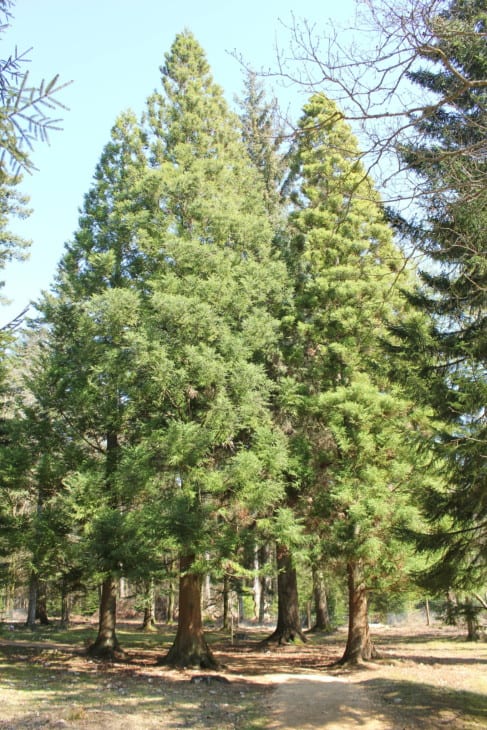
One of the species on this list to make the list, Japanese cedar is most synonymous with Japan’s famous temples and Shinto shrines. Sugi trees are large evergreen coniferous plants that can sometimes grow up to eighty feet tall! One notable example of a very old sugi tree is found at Tōshō-gū in Nikkō, Tochigi Prefecture. This tree is about 1200 years old and believed to be one of the oldest living trees on earth!
2. Japanese Maple (acer palmatum)
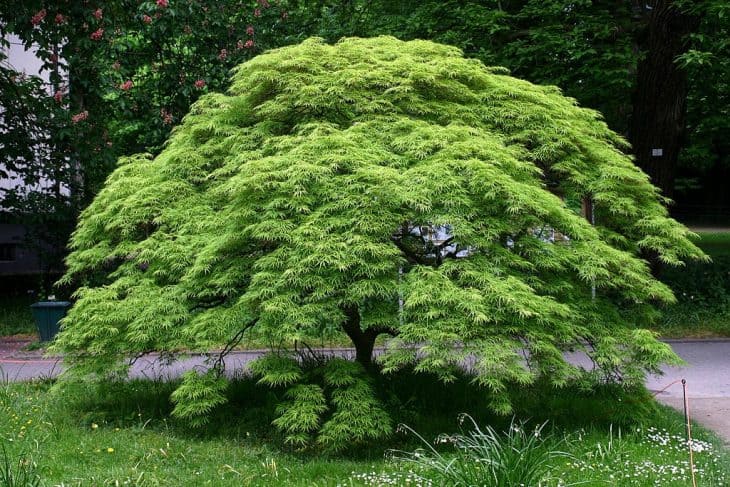
Japanese maple, like most of the trees on this list, is common for their autumn foliage. One notable example of a Japanese Maple is the weeping variety that has branches that hang down to the ground (like in my profile picture). These trees are very popular and can be found planted along sidewalks or at temples with ponds. They come in many different colors, ranging from pinkish-red to green.
3. Japanese Zelkova (zelkova serrata)
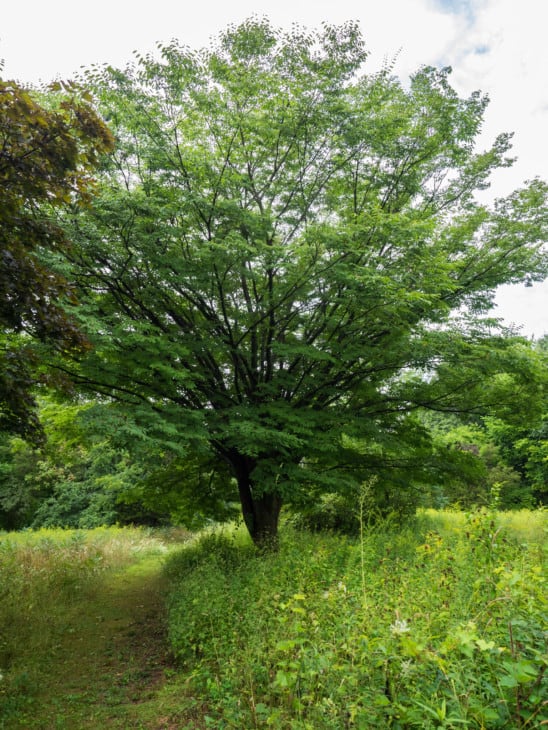
Also known as keyaki trees, Japanese Zelkova are deciduous trees commonly found in parks and graveyards. The leaves of this tree turn a bright yellow in the fall, making them a popular choice for parks and gardens. However, these trees also have cultural significance to the Japanese, and there is even a festival called the Keyaki Dama which celebrates these trees.
4. Japanese Black Pine (pinus thunbergii)
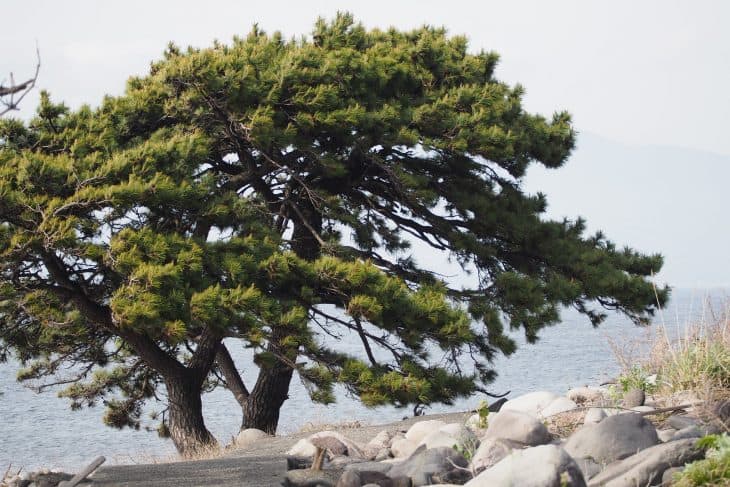
Japanese pine trees are large coniferous evergreen plants that can live up to about 50 years. The most popular variety of this tree is the keyaki which is planted all over the country. In fact, one particular variety of this tree is called the Sakura or cherry blossom type, which can be found in temples or gardens.
5. Japanese Tree Lilac (syringa reticulata)
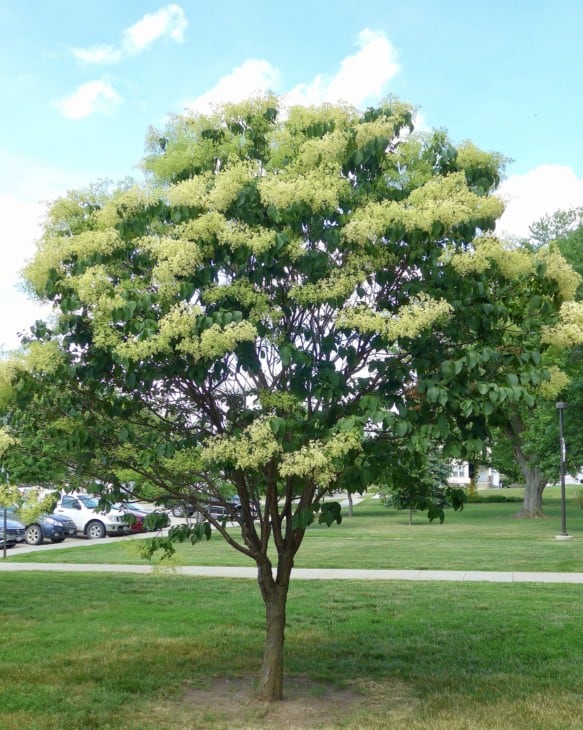
Japanese tree lilac, also known as a 水仙 (suisen), is short and shrub-like. Like many other trees on this list, it has a wide range of colors and can be found in red, pink or white. One interesting fact about this tree is that it holds a traditional Japanese festival known as suisen-bai or “lilac-viewing party” where the trees are adorned with paper lanterns.
6. East Asian Cherry/Japanese Cherry (prunus serrulata)
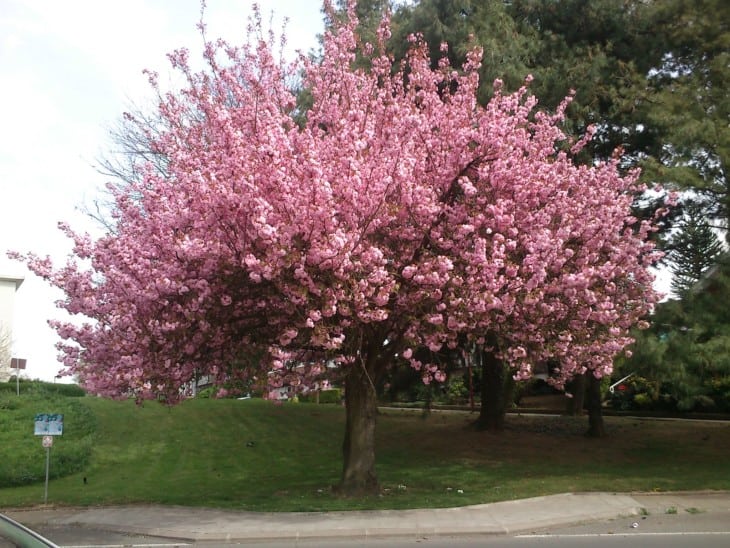
East Asian or Japanese Cherry trees are deciduous flowering plants that come in both small and large varieties. This variety is probably best known for its springtime tradition of Sakura viewing where the trees are decorated with paper umbrellas and later lit on fire (and yes, it is as cool as it sounds!).
7. The Kobushi Magnolia Tree (magnolia kobus)
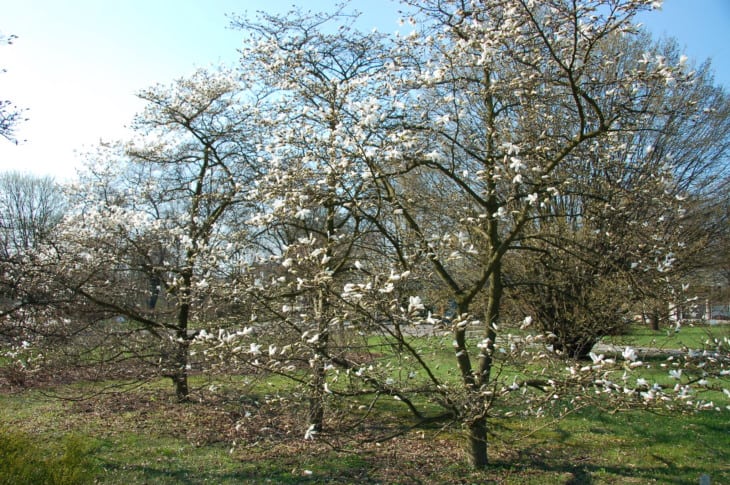
The Kobushi magnolia tree is known for its large white flowers that can sometimes grow to the size of your head! This variety of magnolia tree can also live up to one hundred years. One beautiful example of this tree is the Yuki Matsuri or “Snow Festival” in January where these trees are decorated with snow and paper lanterns.
8. Yew Pine (podocarpus macrophylla)
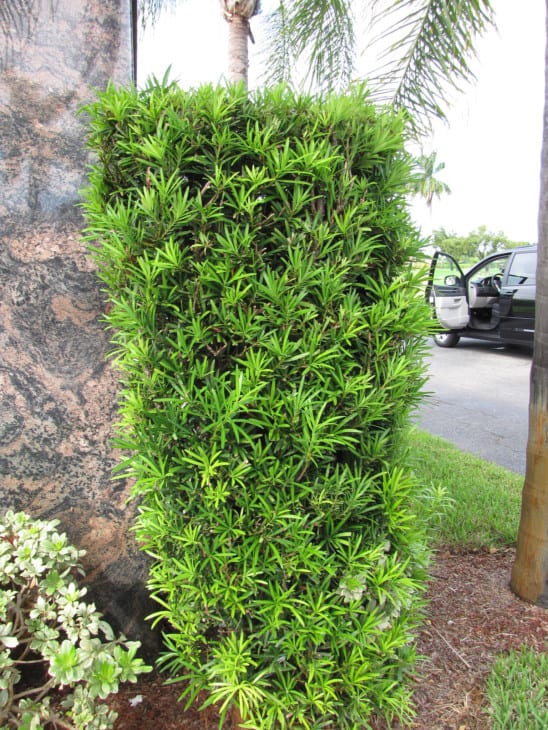
An evergreen shrub-like tree, Japanese yew trees are most prominent during late fall/early winter, when they produce bright red berries. This variety is actually one of the most poisonous on earth, and its berries are toxic enough to kill humans. However, they can be safely eaten by birds, making them a popular choice to plant around the base of birds feeders.
9. Japanese Plum Tree (prunus salicina)
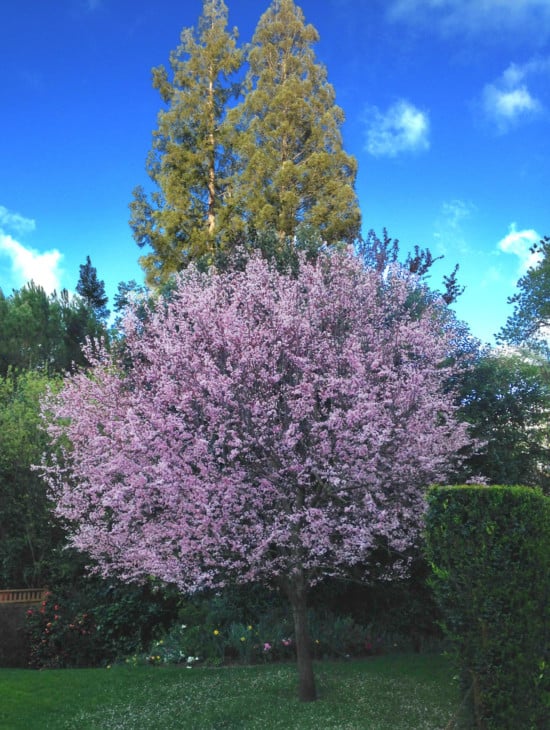
Also known as the Japanese apricot, this small flowering plant is deciduous and produces yellow flowers in the spring. It has a distinct plum-like shape and can be found in many places across Japan.
10. Japan’s Giant Bamboo (phyllostachys edulis)
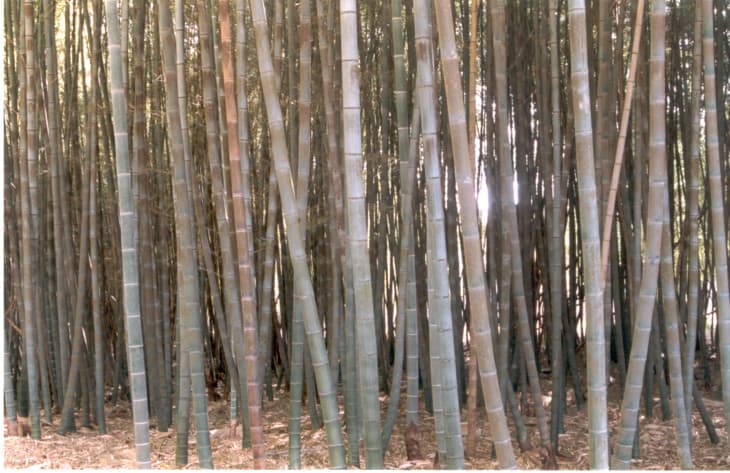
This variety of bamboo is the largest in the world and can sometimes grow over 100 feet tall. Because of this, it is very often used for decorative purposes and can be found in many places, such as temples. The shoots of this bamboo also make a very tasty treat!
11. Tsubaki (camellia japonica)
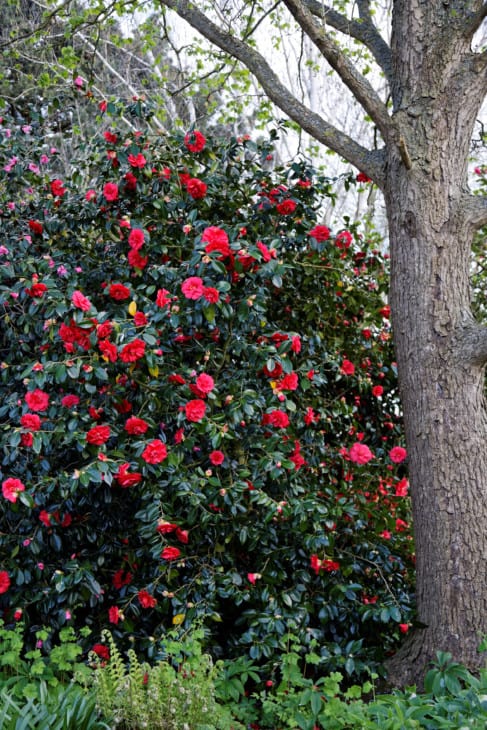
The Tsubaki is a flowering plant that comes in many different colors, ranging from red to pink to white. However, one of the more popular varieties is the deep red variety, which is frequently used for decoration during the fall/winter time. This plant can also be found at many Shinto shrines!
12. Maidenhair Tree (ginkgo biloba)
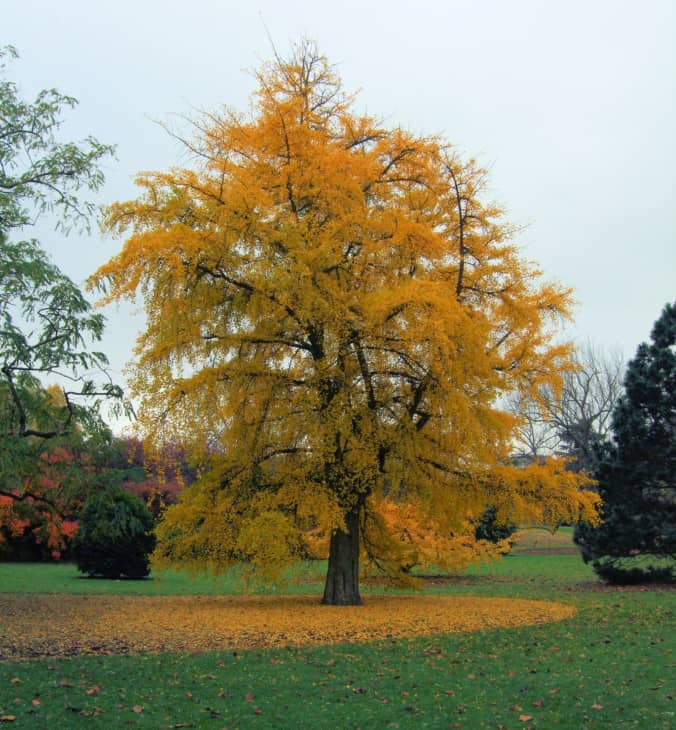
This variety is found in many places, including temples and graveyards, where it is planted along sidewalks. The leaves of this tree are unique in that they are fan shaped and can be seen turning a bright yellow in the fall. Although its fruit is not edible, it has been used for medicinal purposes for thousands of years!
13. Japanese Pagoda Tree (styphnolobium japonicum)
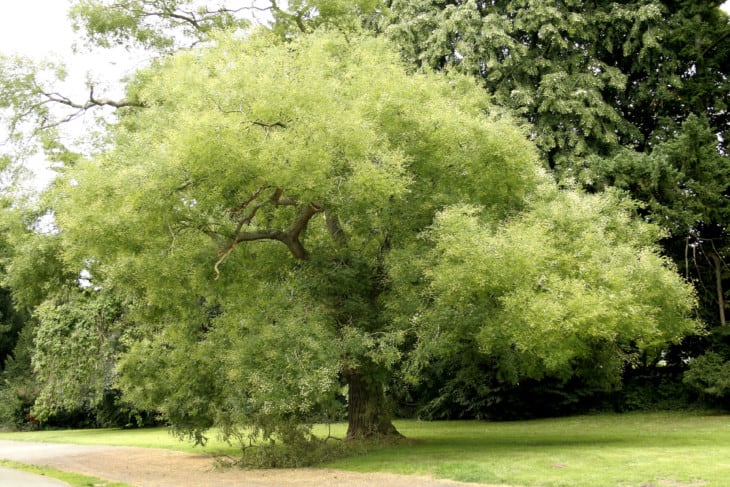
This flowering plant comes in both small and large varieties. During the springtime, it can be seen decorating graveyards while during autumn, its leaves turn into a bright orange color.
14. Yamamomo/Wax Myrtle (myrica rubra)
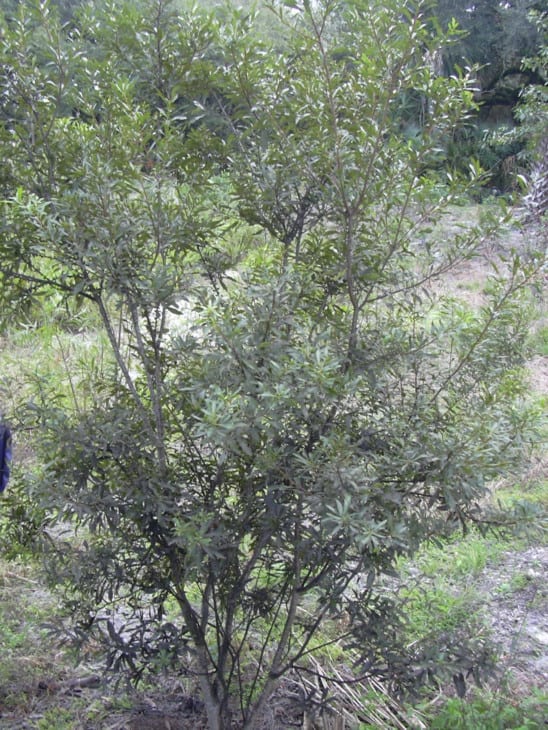
This deciduous flowering tree can grow to be around 40 feet tall. It is known for its beautiful bright red berries, which only grow on female plants. These berries are inedible, but have been used in traditional Japanese medicine for many years! This plant has strong waxy leaves and is often used as a decorative tree.
15. Hinoki/Japanese Cypress (chamaecyparis obtusa)
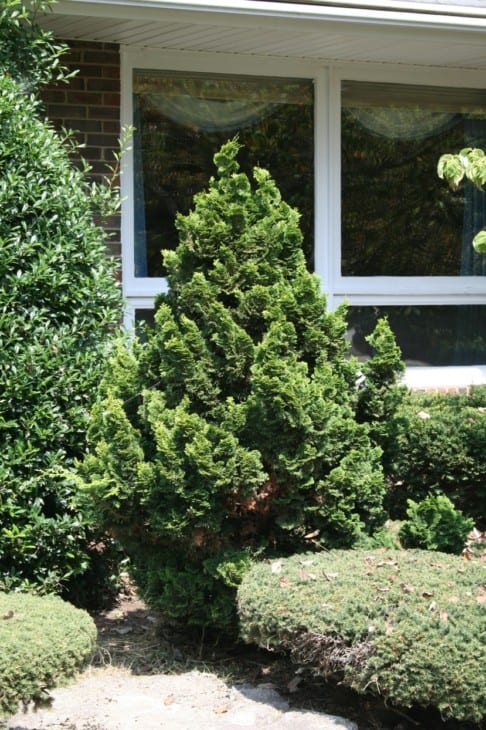
This evergreen tree is a popular choice for use in construction, as it has been shown to be very effective at repelling insects and pests. It is also the national tree of Japan and can be found decorating temples!
16. Japanese Larch (larix kaempferi)
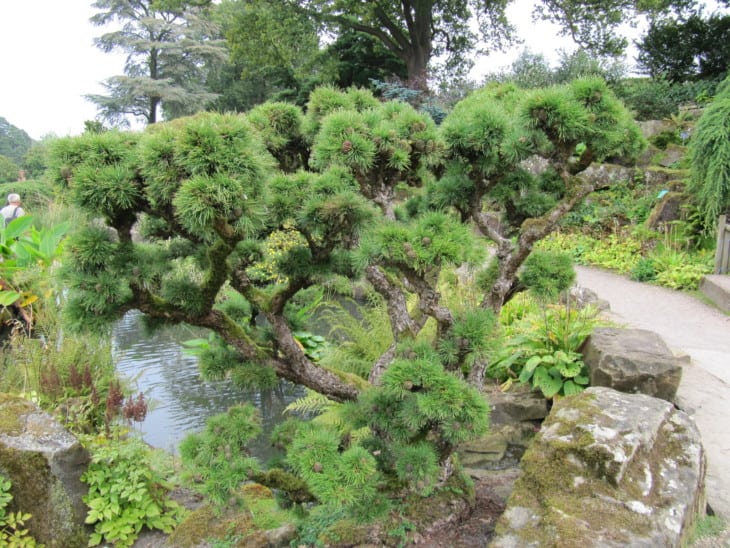
A deciduous tree, this variety is also known as the “tree of 1000 stars” for its beautiful yellow and red leaves in autumn. This tree can also live up to 500 years and is native to Japan.
17. Sakhalin Fir (abies sachalinensis)
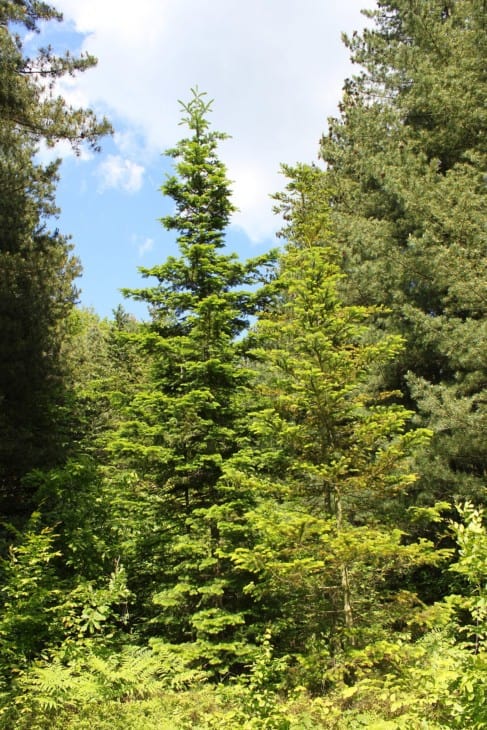
This variety of fir is a popular choice for use as a Christmas tree due to its rich green color! In fact, it is the most widely used variety in Japan for this purpose. The Sakhalin Fir is native to Japan and can be found in many places.
18. Glehn’s Spruce (picea glehnii)
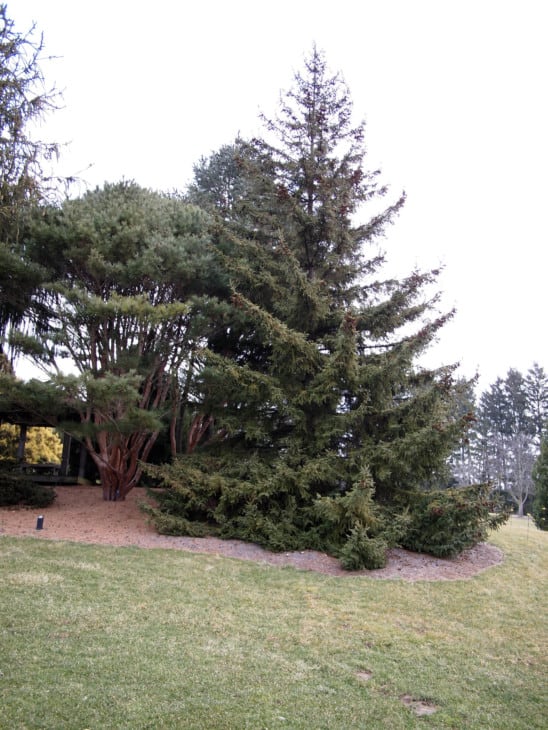
A popular choice for use as bonsai due to its small needles, this variety of spruce is also known as the “tree of 100 spirits” because of its bright green color! This variety is native to Japan and can be found in many places.
19. Japanese Oak (quercus glauca)
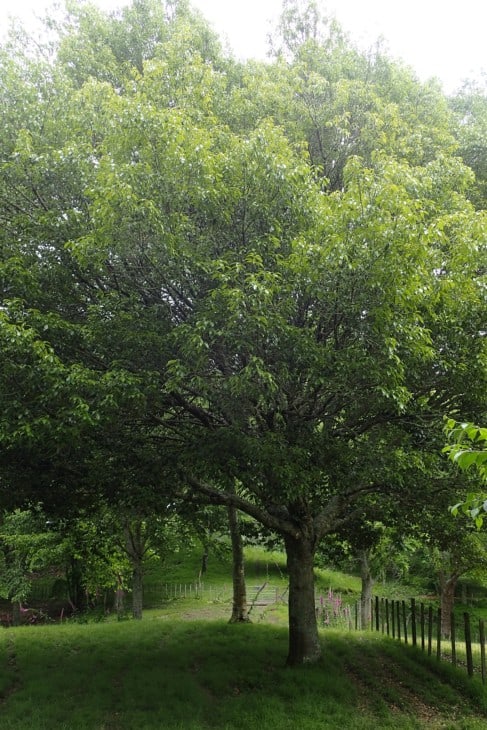
Called the “King of Forest” in Japan, this variety is the most common plant to be used for shii. It also has medicinal uses and can usually be found decorating temples. The Japanese Oak is commonly planted in graveyards and can be found in many places across Japan.
20. Japanese Elm (ulmus parvifolia)
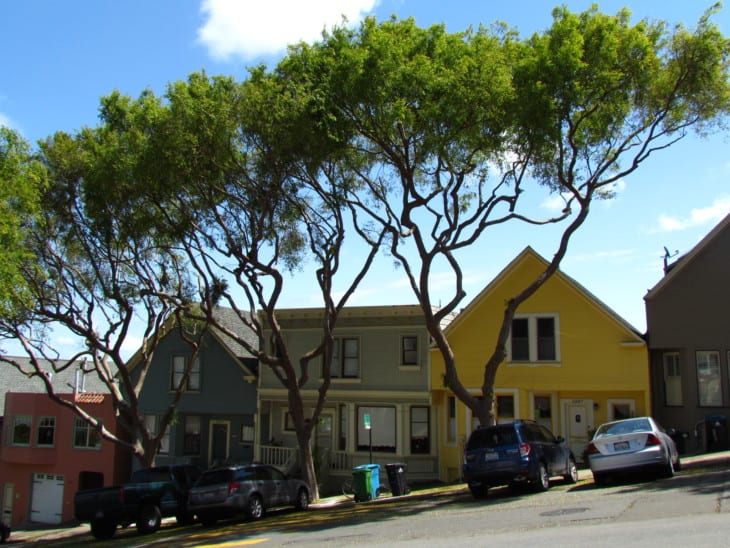
This variety is also commonly used as a bonsai tree due to its exposed root system. It can be found in many places, including Shinto shrines and graveyards. The Japanese Elm grows best in the full sun and does not like frosty environments.
21. Japanese Red Pine (pinus densiflora)
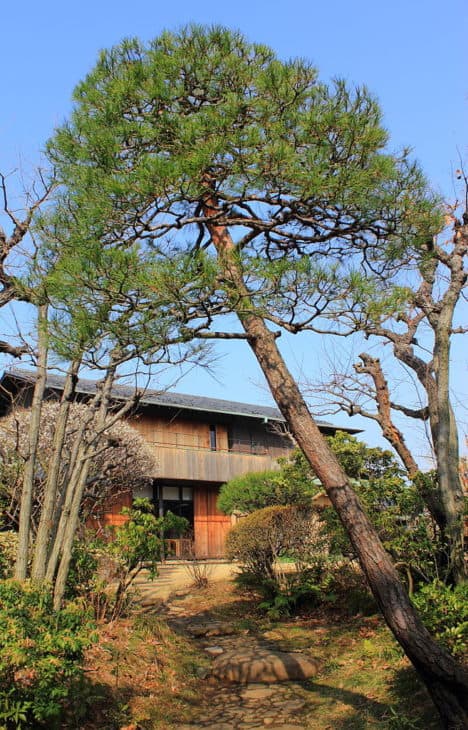
Known as the “Tree of a Thousand Stars” in Japan, this variety of pine has long needles that are spaced closely together. Each needle is also very soft, which makes it a popular choice for use in bonsai. This tree can be found decorating houses and Shinto shrines!
22. Katsura (cercidiphyllum)
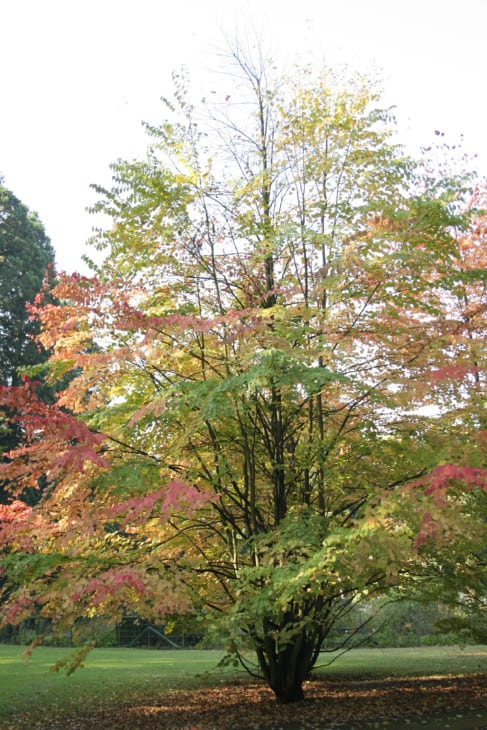
This flowering tree is known for its heart-shaped leaves and pleasant sweet scent! It can be found decorating parks, graveyards, and shrines. This tree is most often noticed in the springtime, due to its beautiful pink/purple flowers. It also has a strong resistance against pollution!
23. Japanese Beech (fagus crenata)
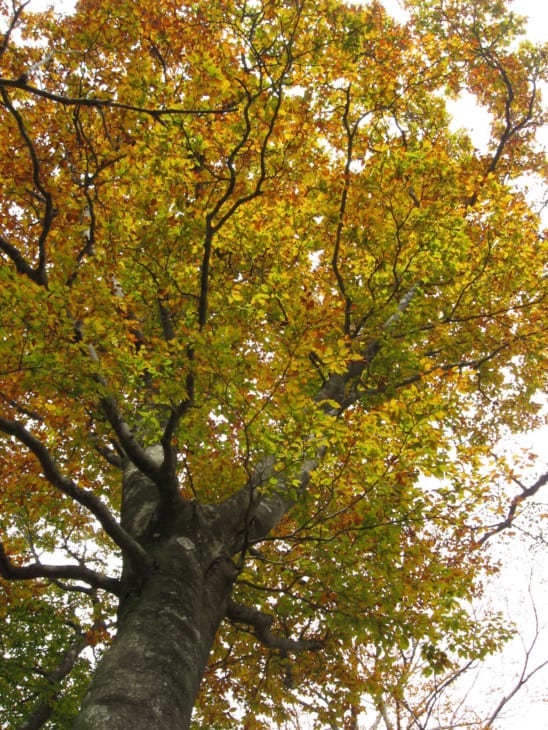
This variety of beech is known for its smooth, silver bark and leaves that are covered with fine hairs. The Japanese Beech can grow up to 100 feet tall and is common in Japan, especially along the coast. It can be found decorating Buddhist temples and Shinto shrines.
24. Japanese Ash (fraxinus lanuginosa)
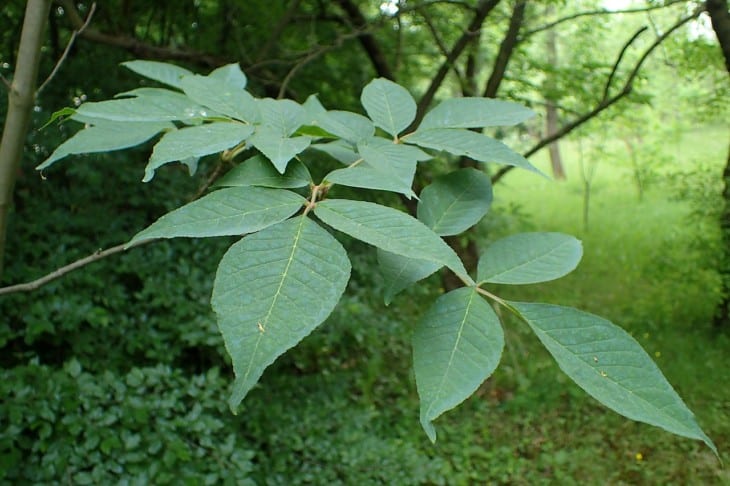
This is the tallest variety of ash in Japan, growing up to 100 feet tall. The leaves are small and glossy with a dark green color! It can be found across japan, especially along the coast, and its bark is known for turning a brownish red color in autumn. The Japanese Ash loses all of its leaves in winter, making it a deciduous tree.
25. Horse Chestnut (aesculus hippocastanum)
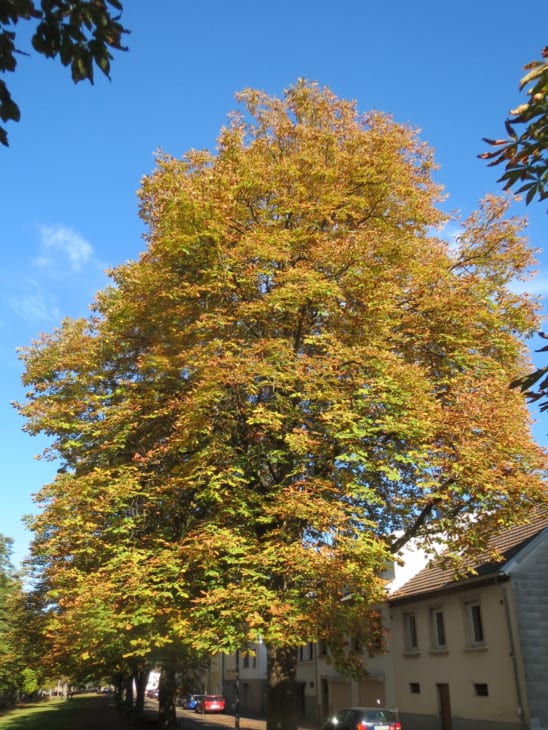
This deciduous tree is popular in Japan for its beautiful yellow and red fall colors. It can be found decorating temples and shrines, especially around the time of Obon. The Horse Chestnut’s leaves are palm-shaped with a dark green color, and it has pink flowers!
26. Asunaro (thujopsis dolabrata)
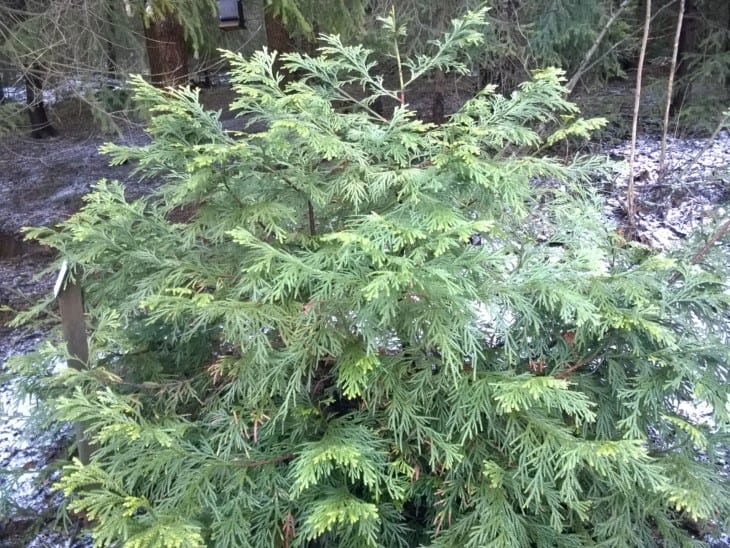
A deciduous conifer, this variety was originally found in Japan and can be identified by its unique leaves that grow to be quite large. Japanese people often plant this tree as a privacy screen. The leaves have a strong turpentine smell, which gives it its Japanese name of “Turpentine Tree.”
27. Shirakashi Oak (quercus myrsinifolia)
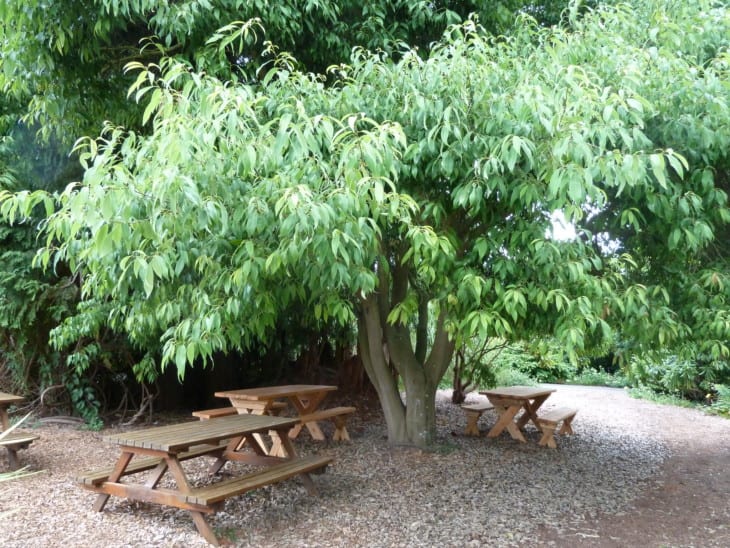
The Shirakashi Oak is a small deciduous tree that is native to Japan. It has scaly leaves and can be commonly found growing along the forest floor. This type of oak is found decorating Buddhist temples and graveyards.
28. Japanese Alder (alnus japonica)
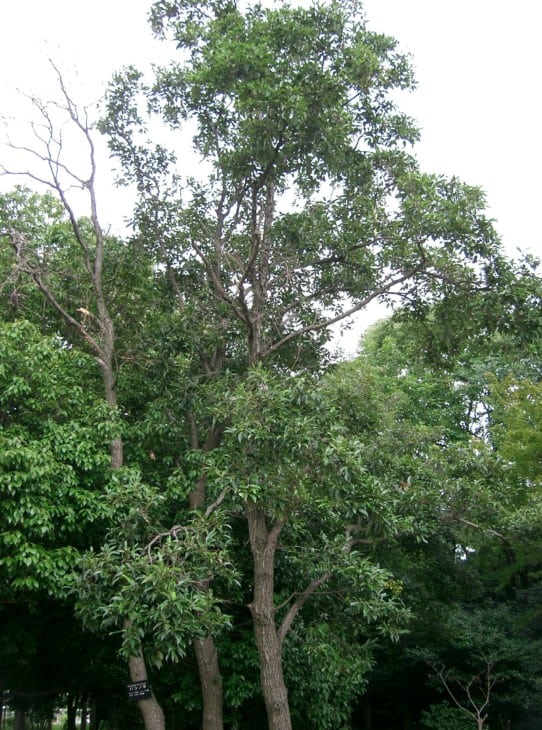
The Japanese Alder is a deciduous tree that is known for its peeling bark. It can be found decorating Buddhist temples, graveyards, and even graveyards! According to tradition, the dead are buried beneath this tree so that they will be closer to Buddha when they are reincarnated.
29. The Japanese Wisteria (wisteria floribunda)
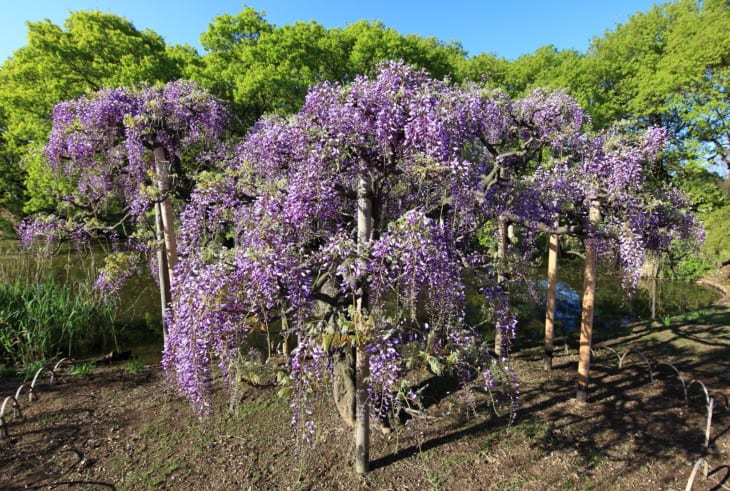
The Japanese Wisteria is a semi-evergreen vine that creeps up and over whatever it grows on. It has beautiful, fragrant flowers that are technically called “flowers” due to their appearance, but they are actually clusters of many tiny flowers. This flower is native to Japan and is found decorating parks, graveyards, and Buddhist temples.
30. Chinese Flame Tree (koelreuteria bipinnata)
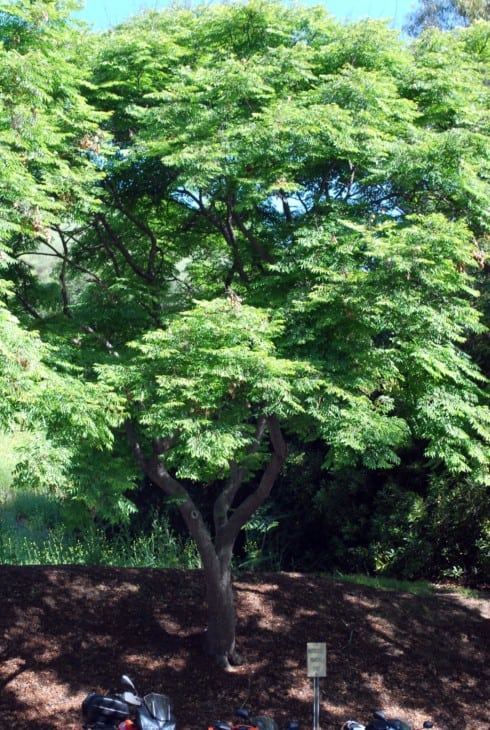
This tree has clusters of small yellow flowers that grow at the end of each branch. It can be found decorating Buddhist temples and graveyards, and it is even said to ward off evil spirits. This tree is native to China but is commonly found in Japan and Korea as well.
31. Sakaki tree (cleyera japonica)
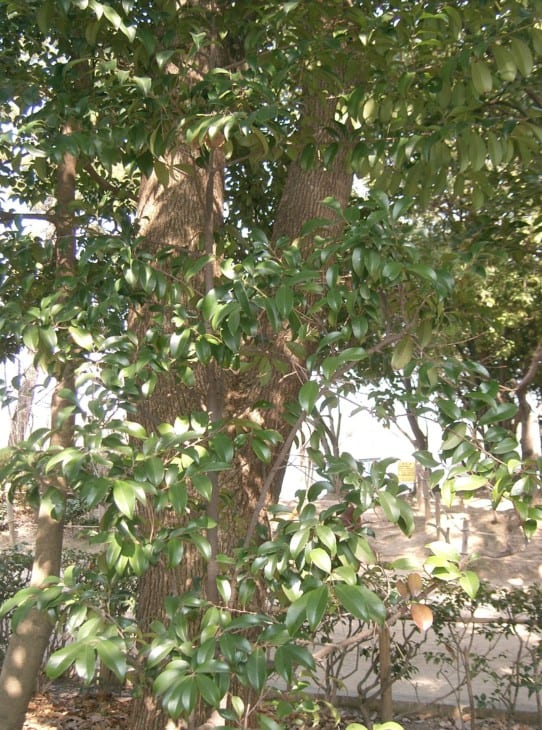
The Sakaki Tree is a deciduous tree that has clusters of small white flowers. This variety of tree is popular in Japan, and it is often found decorating Buddhist temples and Shinto shrines. Sakaki trees were traditionally planted around homes in Japan to protect them from evil spirits, and it was often planted along the road to a Shinto shrine.

